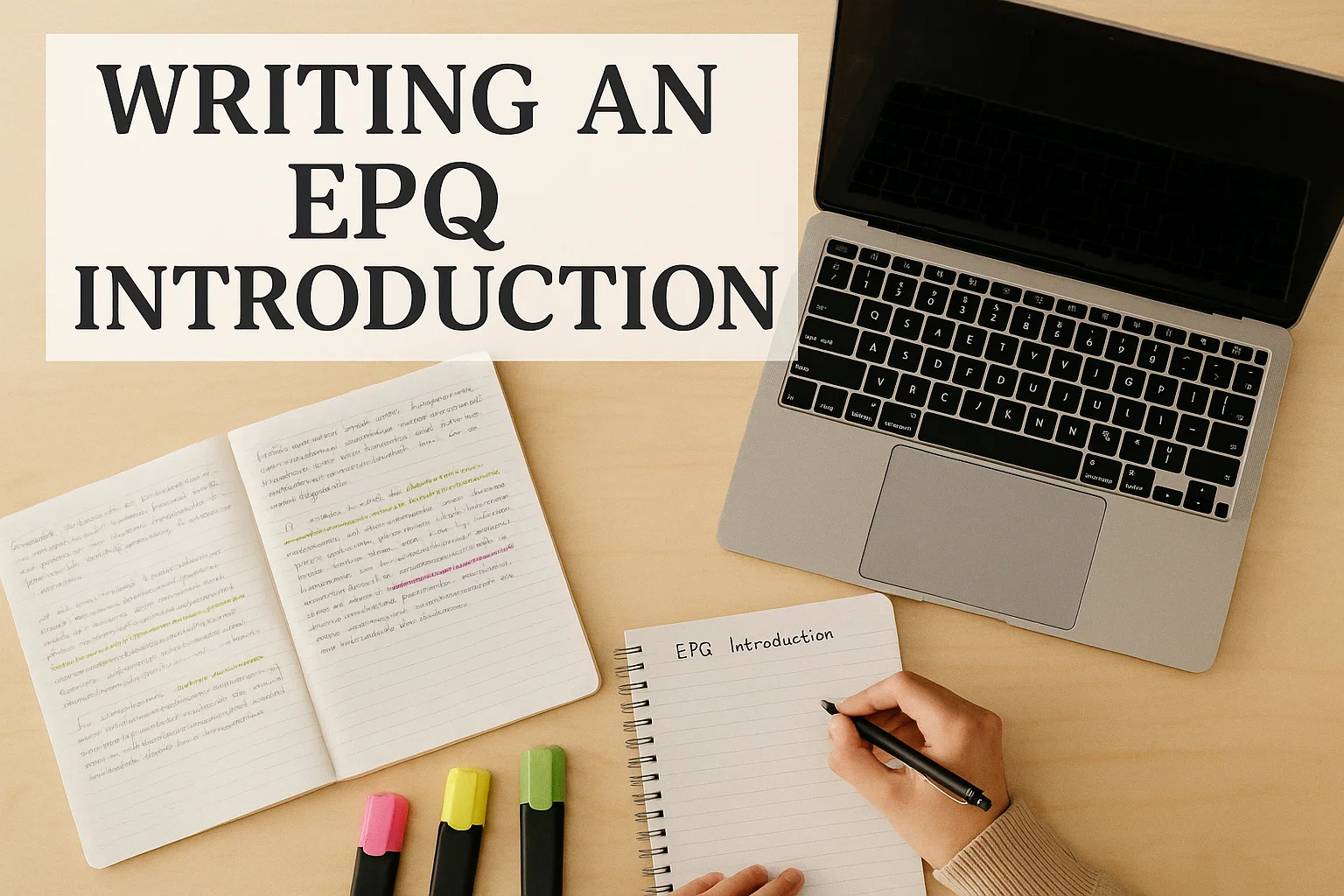So, how do you actually write a proper EPQ introduction? Let’s break it down into plain English.
What Is an EPQ Introduction?
Think of your EPQ introduction as the handshake before the conversation. It’s the opening paragraph (or two) that tells your examiner what you’re researching, why it matters, and where you’re heading.
It’s not a place for rambling, and it’s not your full essay either. Instead, it should outline the research question, explain why you chose it, and give context. By the end, your reader should know exactly what you’re aiming to explore.
Why Does It Matter for Your Grade?
A lot of students underestimate the introduction. They focus on the big chunk of research and the conclusion, leaving the intro as a rushed afterthought. Bad idea.
Examiners love clarity. If your project is well-framed from the start, you’re signalling that you’re organised, thoughtful, and serious about your research. That’s how you creep towards that A*.
In fact, some EPQ moderators have said that a weak intro makes them doubt the quality of the rest of the project, even if the content is solid. First impressions count.
How Long Should an EPQ Introduction Be?
Here’s the tricky part. The EPQ isn’t a 500-word essay. You’re dealing with around 5,000 words in total. Your introduction should usually land between 300 and 500 words.
That’s long enough to show depth but short enough to avoid drowning your reader in detail. If you start creeping towards 1,000 words, you’re writing a mini-chapter rather than an intro. Keep it sharp, focused, and clear.
The Key Ingredients of a Strong EPQ Introduction
A solid EPQ introduction usually covers these four points:
1. The Background
Give your examiner context. What’s the broad subject area? What problem or theme are you exploring? This is your chance to prove you’ve chosen something worth researching.
2. The Research Question or Hypothesis
This is the beating heart of your project. State it clearly. If you can’t explain your research question in one or two sentences, it’s too vague.
3. Aims and Objectives
What do you want to achieve? For example, are you comparing two theories, testing an idea, or evaluating a social issue? Lay out what you’ll do, don’t just hint at it.
4. Why You Chose the Topic
Examiners love to see motivation. Did you pick your topic because it links to future studies, personal interest, or a career path? Say so. It makes your project feel purposeful, not random.
Step-by-Step: How To Write Your EPQ Introduction
Step 1: Start Broad, Then Narrow Down
Begin with a big picture statement that introduces your topic area. For example:
“Climate change is one of the most pressing issues of the 21st century. Within this global challenge, renewable energy has become a key area of focus. My project investigates the effectiveness of solar panels in urban environments.”
Notice how it moves from wide to specific? That’s what you need.
Step 2: Clearly State the Question
Don’t dance around it. Write your research question exactly as you intend to explore it. Something like:
“To what extent are solar panels an effective solution for reducing household carbon emissions in UK cities?”
Step 3: Explain Your Motivation
Two or three sentences about why you picked this topic. Maybe it links to your A-level subjects, maybe it’s a career path, or maybe you’ve seen it play out in real life.
Step 4: Outline the Aims and Method
Spell out what you’ll do. If you’re going to analyse studies, interview people, or test something yourself, say so.
Step 5: Keep the Tone Formal but Human
Remember, you’re not writing a diary entry. Keep it academic, but don’t write like a robot. Clear sentences beat jargon every time.
Common Mistakes To Avoid
Being Too Vague
“I’m writing about technology in schools” is weak. “I’m investigating whether tablets improve GCSE maths results” is strong.Writing a Whole Essay
Some students treat the intro like chapter one. Don’t do it. Save the depth for later.Skipping the ‘Why’
If you don’t explain why you chose your topic, it looks random. Always include a personal or academic reason.Forgetting the Research Question
Examiners can’t mark what they don’t understand. If your question isn’t crystal clear, you’re already losing marks.
Tips To Secure an A*
Now, the million-pound question, how do you turn a decent intro into an A*-level one?
Show clarity – If your examiner can explain your project to someone else after just reading your intro, you’ve done well.
Link it to bigger themes – Don’t just say “I’m researching recycling”. Say why recycling matters for society, policy, or industry.
Be specific, not fluffy – Replace vague terms like “stuff” or “things” with precise concepts.
Proofread like mad – Nothing kills an intro faster than sloppy grammar.
What percentage of people actually get an A* in EPQ?
Around 20–25% of students manage it each year. Not impossible, but definitely competitive. And here’s the catch, most of them don’t necessarily have the “best” ideas. They just present their projects with insane clarity. That starts with the introduction.
Example Mini-Template
Here’s a simple framework you can follow (fill in your own words):
“The [broad topic] is an important issue in [context]. Within this field, my project will investigate [specific question]. This topic was chosen because [reason/motivation]. My aim is to [state aim], and I will do this by [method/approach].”
That’s it. Clean, structured, and examiner-friendly.
Final Thoughts
Your EPQ introduction isn’t just the start of your project, it’s the map. Without it, your examiner will be lost. With it, you’re already halfway to making your project feel professional and well-researched.
Take the time to write it properly, avoid fluff, and remember: clarity beats complexity every time. If you want to push further, try rewriting your intro after finishing your whole EPQ. You’ll often find it’s easier to sharpen your focus once you’ve seen where the research led you.
And if you ever need a tool to polish your writing, you can check out Spinbot’s article rewriter to tidy up messy drafts or rephrase tricky sentences.

Oliver Bennett, with his Master’s degree from Manchester Metropolitan, is our in-house SEO specialist. At Spinbot UK Blog, he focuses on optimizing content to achieve the highest search engine rankings and edits articles to ensure they meet the highest standards of clarity and precision.
